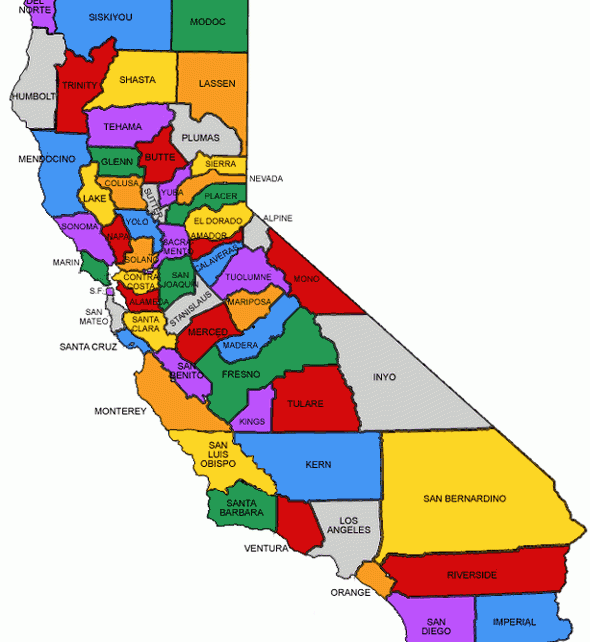How Many Counties Are There in California? Full Breakdown & FAQs
How Many Counties Are There in California? Full Breakdown & FAQs
Blog Article

Trying to find out what the exact county count in California is? You’d be surprised how many people ask the same question. Whether it’s for school projects, travel plans, or simple trivia, the number 58 keeps popping up, butthose two digits barely scratches the surface.
The Golden State’s 58 counties createa patchwork of contrasts: surf-washed beach cities, pine-covered mountain regions, vast agricultural heartlands, and thriving tech metropolises. Each county carries its own story, shaped by gold-rush dreams, promising new industries, and relentless population booms.
Over the next few pages, we’ll explore why California ended up with 58 counties, the real responsibilities counties shoulder, and the record-holders—from the tiniest to the most populous. Ultimately, you’ll have the numbers—and be ready to ace any quiz with confidence.
How the Golden State Reached 58 Counties
On statehood day in 1850, the map contained barely half the jurisdictions we know now. An unprecedented population boom forced lawmakers to redraw borders. Within twenty years, the count had ballooned to over five dozen counties, and in 1907 the last adjustments were ratified, cementing the canonical figure of 58.
Legislative records show that many break-away regions sprang out of a trio of factors:
- Geographic isolation left settlers days from the nearest courthouse.
- Tax disputes pitting ranchers against merchants ignited partition drives.
- Language and immigrant communities demanded tailored governance.
Within a single generation, the political map stabilised. Today, every effort to create county #59 stalls, causing commentators to dub the era of county making decisively over.
From Kelp Forests to High Deserts: County Geography
Imagine a line from the Smith River watershed to the date groves of Coachella, and you’ll thread through dozens of ecosystems. Ocean-brushed jurisdictions benefit from Mediterranean precipitation, while basin counties in the Central Valley bank on irrigation.
- Alpine districts such as Placer, Nevada, and Alpine receive winter snows.
- Sacramento–San Joaquin fringe counties fight subsidence but export produce worldwide.
- Island counties like Ventura oversee ferry routes.
That geographic spread underpins the stark fiscal gaps between counties. Weather sets tax bases and lifestyles.
What Counties Actually Do
Amid Sacramento’s delegated framework, municipalities handle zoning, but counties are tasked with vital “unseen” duties that keep daily life humming. From birth to death—marriage licenses, tax rolls, voter registries—all reside at the recorder-assessor’s office.
County law-enforcement offices patrol unincorporated land, while trial courts hear felony cases. Public-health branches coordinate Medi-Cal. Budget battles occur in monthly Board of Supervisors sessions.
Spotlight: Los Angeles County’s Scale
Contra Costa partners with nearby cities for animal control, illustrating how adaptable county structures can be. One template doesn’t fit all when budgets span five figures to double-digit billions.
In the end, county offices translate state statutes into daily action. Knowing their role empowers voters.
Demographic and Fiscal Highlights
The state shelters over 39 M souls, but those citizens collects in dramatic clumps. Los Angeles County alone packs nearly 25 %. Conversely, high-elevation Alpine could fit its voters into a high-school gym.
- Top headcount: Los Angeles
- Fewest people: Alpine County
- Widest landmass: San Bernardino County
- Smallest area: City & County of SF
Fiscal bandwidth mirrors population spread. Silicon Valley counties see venture cash flow in at record rates, while interior ag counties battle mechanisation and drought cycles. Such economic polarity informs legislative redistricting every decade.
Memorising these records pays dividends: tax rates, job prospects, and lifestyle perks hinge on county lines.
Touching All Counties in One Journey
For intrepid travellers, setting foot in each CA county ranks as a top geo-challenge. A popular itinerary begins in San Diego, heads north along Highway 1, jogs east near Big Sur, then zigzags across the Central Valley’s orchard belt, before climbing into the high Sierra for ghost towns and mining museums.
Breaking the Trip Into Segments
- South-land Loop – San Diego to Santa Barbara; ten jurisdictions in three days.
- Heartland Stretch – Bakersfield up to the delta; eight hours of orchards.
- Northern Peaks – crater-rim roads; fire-lookout hikes.
Finish the circuit in the desert southeast, having logged 1 400–2 000 miles. By then, you can confidently claim you know “how many counties California has”—because your copyright stamps prove it!
Frequently Asked Questions
Below you’ll find concise answers to the most common county-related queries.
What is the total number of counties in CA?
Government documents list 58 counties—a number that hasn’t changed since 1907. Regardless of the source—be it Sacramento archives or federal census data: 58 in all.
Where do the most Californians live?
The population heavyweight is Los Angeles County, hosting a population greater than that of many U.S. states. Decades of immigration, entertainment dominance, and job growth how many counties does ca have keep the numbers high.
Which CA county has the fewest residents?
The crown for smallest population goes to Alpine County, with fewer than 1 200 inhabitants. Location along rugged mountain corridors keeps growth modest, creating tight-knit communities.
What is California’s biggest county geographically?
The land-area giant is San Bernardino County encompassing deserts, mountains, and metro suburbs alike. You can drive for hours without leaving its borders—crossing ski slopes, dunes, and bedroom communities.
Why does California have exactly 58 counties?
Early statehood growth pressures split larger districts into smaller units, ending when Imperial County formed in 1907. Since then, proposals to add a 59th county have surfaced but never cleared the Legislature.
Can new counties still be created in California?
Technically, the California Constitution leaves the door open, though the process is arduous. Petition drives, feasibility studies, dual-county referenda, and a two-thirds vote in Sacramento make secession rare. Hence, California has remained at 58 for generations.
Why are counties important to everyday life?
Counties handle the backbone of local governance: property assessments, public hospitals, welfare programs, and jails. Their wide remit bridges state mandates with community needs, making the 58 jurisdictions essential to all Californians.
Report this page